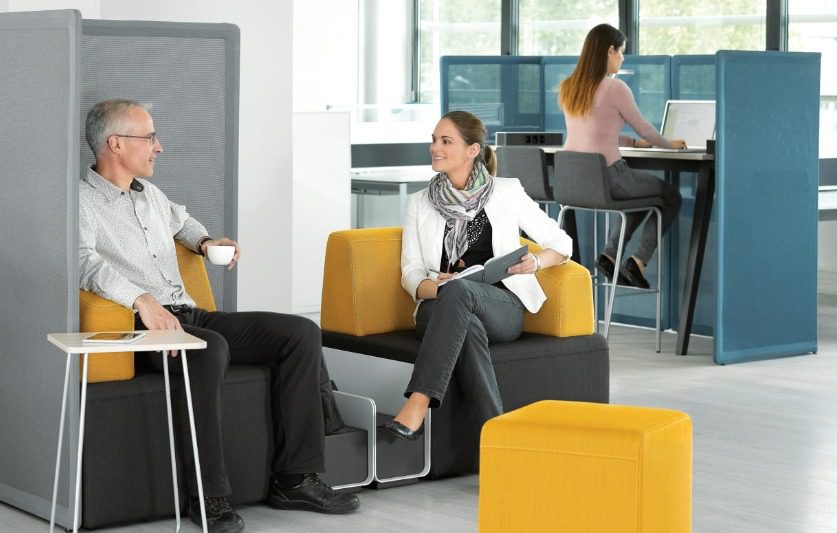Editor’s Note: As C-Suites and public company directors wrestle with creating the kind of work experiences that attract and retain the best and brightest, Chief Executive Group is here to help. On April 27, we’ll be hosting a day-long “Making Hybrid Work Great” event in New York and online, and on May 2, we’ll hold “The Remote Work Future.” Online, of course.
Three years into the greatest reshuffle in office work since the birth of the commercial Internet and many CEOs and their executive teams remain more than a bit at sea when it comes to the question of motivating and retaining their people.
Increasingly, hybrid work is the order of the day, at least for white-collar jobs, with a schedule of three/four days in, one/two days from home an emerging norm. But norms aren’t best practices, and despite some high-profile layoffs fueling a perception of renewed leverage with labor, hiring and retaining great people remains a front-of-mind concern for most companies.
“We’re starting to see now leading-edge organizations starting to realize, ‘Okay, we’ve got them back,’” says Ron Martere, business group VP at office furniture maker Steelcase. “That was sort of the easy part, right? We mandated them to come back. Now we have to make that experience good and it’s got to support hybrid work.”
To help get the lay of the land, I once again reached out to Martere and Allan Smith, chief revenue officer at the company, for their take on the way we work now. Steelcase routinely surveys more than 57,000 workers around the world to understand trends in workplace sentiment.
Close readers will remember that I talked to Smith and Martere last year. Following that conversation, Chief Executive Group and Steelcase decided to partner on a new initiative to help C-Level executives and corporate directors get a better bead on how to hybrid. We’ll be kicking it off with an event in New York on April 27—we hope you can join us, in person or online.
So what is Steelcase’s newest research and work with clients telling them about the state of the office in 2023? What’s changed, what’s changing? And what can do you do now to get an edge on your rivals in a hybrid world? Some takeaways from the conversation:
The Way We Work Now
The overall state of office work, post-pandemic? There are big variations by country and culture, according to Steelcase’s survey data, ranging from China, where workers are back in the office four and five days a week “at about the 95 level,” to Canada where workers are in the office three days a week on average, “and that’s about 45% of the time.”
In the U.S., Southern cities—especially in Texas and Florida—have far higher rates of office return than Northern cities like Chicago and New York. “There’s more fear,” says Smith. “They tend to wear masks more. But I think it’s also directly related to the culture and the government mandates and requirements for work and the workplace. So I think it’s a hangover a little bit from that.”
More Office=More Connection
Steelcase’s survey work is also showing that while work flexibility is essential, many workers—especially younger workers—are really enjoying being back in person, as are most boomers, who spent decades developing the office habit.
The holdouts, as was the case with their earlier surveys, are workers with more family responsibilities—as you’d expect. They’re most enamored with working from home.
But worth noting, and perhaps not surprising: those who are in the office feel far more a part of the company than those who do not come in. “We’ve asked employees directly: do you feel connected to your company and its mission? And we see a marked difference,” says Smith. “The people that are out of the office feel less connected to leaders, they feel less connected to the mission, and they feel less connected to how they can contribute specifically to the company’s growth. There is a connection between space and socialization. Work is an inherently social experience.”
They Want a Little Privacy
But when they come back into the office, Steelcase’s research is finding that workers now desire more privacy than they had prior to the pandemic—acoustical privacy, territorial privacy, psychological privacy. And if you still have the elbow-to-elbow trading-desk style seating popularized by Silicon Valley pre-pandemic, dump it. Your employees hate it.
“People are looking to have as much privacy in the office as they had at home,” says Smith. “And so that could be full-height architectural walls. It could be small pods or places for people to kind of get away without going away. And the other thing they’re looking for is spaces to do collaboration that are dedicated…those are the kind of things that make people want to come back.”
They Don’t Want Friction
At the center of all good hybrid is, of course, technology that works. Technology friction is a huge—and perhaps underrated—bugaboo for hybrid workers. Martere and Smith say that the past few years have annihilated employees’ patience with the old “can you hear me?” days of fussy office Wi-Fi and tangled cord-clutter in conference rooms. They just want things to work. Device makers like Logitech and Microsoft have gotten the message, they say, and are focused on improving the in-office user experience.
But to really win with in-office workers, you need to think beyond just laptops and batteries and connectivity. “Where does a person’s day start and how do you eliminate friction as soon as they walk in?” asks Smith. “Is it easy to find a space? Can I find the colleagues I’m working with? Is it easy to use the technology? So wherever we can, wherever space or furniture or what we provide can help, we try to ease the people’s burdens as they start their day. And I think it, ultimately, makes them more satisfied with work, the space, their employer and ultimately, their interactions.”
They Want to Feel at Home
Not being annoyed is just table stakes for winning back workers, however—especially young workers. If they’re making the effort to put on real pants and come into the office, they’d like it to be a big improvement on what they experience at home. They want to gather with colleagues and share experiences that are part social, part business—and a welcome alternative to talking at each other through screens.
In collaborating with noted NYU sociologist Eric Klinenberg, author of Places for the People, Steelcase found that companies should be building “stickiness” in the office however possible—the intangible that makes people want to hang out and not rush off. It isn’t just a foosball table and free lunch—it’s more like a favorite neighborhood, with options for how people gather. An environment with a mix of comfortable settings versus just rigid conference rooms, for example.
“We want to linger here a little bit because it’s an enjoyable, inviting space,” says Martere. “I think that is sort of the trend that we’re certainly advocating, but we’re also seeing it’s working.”
Most Important: Focus on the Overall Employee Value Proposition
None of this is really a big lift for companies, say Smith and Martere. But it will require a bit more focus than many companies have had in the past. Their advice: Don’t just think about office furniture or layouts. Think about how you’re building and selling the entire work experience to your people.
“Attack the problem of the employee value proposition with intentionality,” says Smith. “Thinking about the people, the process, the technology, the space as a holistic group of items that really need to be addressed. It’s not just one thing, but it’s multifaceted. And all those things kind of coming together in a very intentional way that’s directly related to your business purpose or the outcome you’d like to achieve in business, to me, that’s the opportunity now for CHROs, CEOs, CFOs. It’s really an opportunity as part of their employee value proposition to get people back, to get them engaged, to get them committed, recommitted to the organization’s success.”
As Martere puts it: “You can’t mandate stickiness.”








